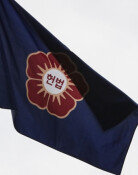Bo (barrage)
There are many ways to store water and control water level: a dam that contains water in a valley-shaped area like an reservoir, a barrage that stores and releases water with a sliding water gate on the river bottom, and a weir that lets water overflow the river if it goes over a certain level like a bo in the water. The Korean civil engineering dictionary defines a barrage as a bo, but uses the same English expressions for a dam and a weir.
Though the bos in the Han River such as Jamsil-bo and Shingok-bo are called bos, they are basically weirs. A weir offers the most eco-friendly way to manage rivers. Park Won-soon, a candidate for Seoul mayor from the opposition, said in ignoring the conceptual difference between bos and weirs, A bo is kind of a way to make the Han River into a lake and getting rid of it for the natural flow of the river is preferable. If Jamsil-bo is removed, the water level will go down and the intake tower that supplies water to Seoul residents should be relocated. This will require billions of U.S. dollars and massive civil engineering works. Except for the monsoon season, the Han River should show its bottom and sewage will make it stink. If Shingok-bo is eliminated, the rice paddies in the Gimpo area could have difficulty in securing water, and the quality of water might deteriorate due to salty water when the tide is on the flow.
With respect to 16 bos to be placed in the country`s four major rivers, opponents want to interpret the facility as bos while supporters want to think them as weirs. Though bos in four major rivers are large in size, they are supposed to flow over when water reaches a certain level. In this respect, they are closer to weirs. They should be considered bos if water does not overflow thanks to high banks and the water level can be controlled by using a sliding water gate in general. In other words, bos in the four major rivers are a mix of bos and weirs.
Sejong-bo in South Chungcheong Province opened Saturday for the first time as a bo in the four major rivers, which will have a combined 16 bos. Baekje-bo is scheduled to open Oct. 6, followed by Juksan-bo in the Yeongsan River Oct. 8 and Yeoju-bo and Gangcheon-bo in the Han River Oct. 15. The bos in the four rivers are reportedly designed in a much more eco-friendly manner than traditional bos because they have the features of weirs. The people must now see the bos of the four major rivers and judge them.
Editorial Writer Song Pyeong-in (pisong@donga.com)
Headline News
- Med professors announce intention to leave hospitals starting Thursday
- Bridge honoring Sgt. Moon Jae-sik unveiled in Pennsylvania
- Chief of Staff Chung tells presidential secretaries to stay away from politics
- US FTC bans noncompete agreements
- N. Korea launches cyberattacks on S. Korea's defense companies







